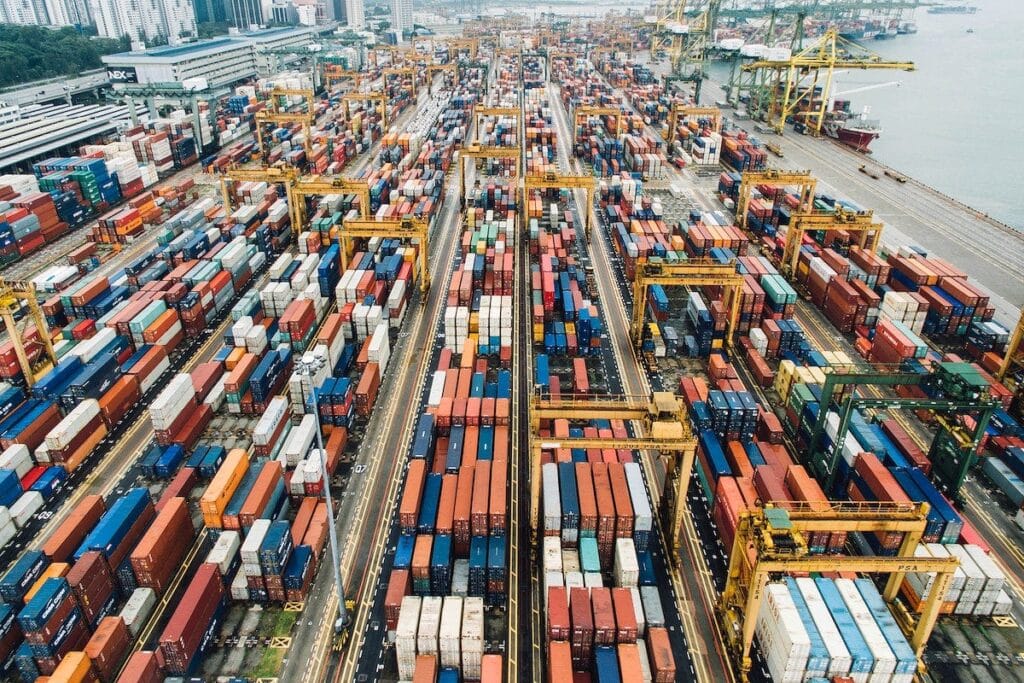
In fast-growing markets across Africa, the Middle East, South America, and Central Asia, demand for professional workwear is booming — yet distribution remains fragmented and relationship-driven.
For importers and distributors, success depends less on what you sell, and more on how and where you sell it. Whether your customers are local contractors, government projects, or industrial firms, choosing the right sales channel determines how efficiently your products reach end users, how strong your brand becomes, and how much margin you keep.
In this long-form guide, we’ll explore:
- The five major sales channels in emerging markets and their real-world pros & cons
- How to balance offline trust with online visibility
- Case studies from Kenya, Egypt, and Brazil
- A practical comparison table to help you design your own distribution strategy
📊 Google Snippet: Quick Answer
To sell workwear effectively in emerging markets, use a hybrid model combining traditional wholesale markets, hardware stores, and B2B distribution — backed by digital engagement via WhatsApp, Facebook, and trade fairs.
Offline trust builds credibility; online tools expand reach and streamline communication.
🏪 Key Sales Channels and Their Pros & Cons
1. Wholesale Markets
Wholesale hubs are the backbone of trade across developing economies — bustling centers where thousands of small traders, contractors, and retailers come to source affordable products daily.
From Kariobangi in Kenya to Alaba in Nigeria, these markets remain vital for early-stage distributors.
| Aspect | Advantages | Disadvantages |
|---|---|---|
| Customer Base | Fast access to bulk buyers, retailers, and small contractors | Highly price-sensitive buyers, limited brand loyalty |
| Cash Flow | Immediate payments, cash turnover | Short-term relationships, low margins |
| Logistics | Low delivery cost, on-site pickup | Hard to scale beyond local reach |
| Suitable For | Startups and early distributors | — |
🟢 Tip: Use wholesale markets as your entry point — build volume first, then expand to more structured B2B and enterprise channels. Create visual displays and local-language posters to stand out among generic suppliers.
2. Hardware Stores & Safety Equipment Shops
Small neighborhood hardware stores and PPE outlets remain a key link between importers and end-users. These shops supply construction workers, electricians, and factory technicians who buy small but frequent quantities.
| Pros | Cons |
|---|---|
| Deep trust with local workers and site managers | Requires wide distribution coverage |
| Handles B2C and B2B sales simultaneously | Payment cycles can be slow |
| Allows physical product trials | Stock rotation may be inconsistent |
🧠 Example: Offer “starter packages” of 10–20 sets of workwear, with free display racks or signage. Distributors in Ghana and Ethiopia report a 25% increase in store reorders after such programs.
3. B2B Distributors and Regional Partners
Once your product gains traction, partnering with regional distributors helps you scale efficiently. These partners already supply industrial clients, mines, or logistics firms.
| Pros | Cons |
|---|---|
| Handles bulk orders with fewer transactions | Lower per-unit margin |
| Stable demand through contract sales | Requires trust and consistent quality |
| Reduces operational complexity | Harder to maintain brand identity |
🏗️ Use Case: In Saudi Arabia, PPE importers often collaborate with local distributors holding government licenses, allowing foreign brands to access tenders without local registration barriers.
4. Government Projects & Public Tenders
Public sector procurement offers some of the largest and most stable orders — especially for uniforms, reflective vests, and protective coveralls. But entering this space demands strict documentation and patience.
| Pros | Cons |
|---|---|
| High-volume, long-term contracts | Long payment cycles (3–6 months) |
| Builds strong credibility and references | Requires certifications like ISO, CE, or ANSI |
| Potential for recurring orders | Bureaucratic hurdles and political changes |
📜 Pro Tip: Partner with a local company that understands the tendering process. In Tanzania and Egypt, foreign suppliers often bid jointly with local agents to navigate administrative complexity.
5. Direct-to-Enterprise Supply
Supplying directly to industrial companies, logistics providers, or oil & gas operators can be highly profitable — but it requires relationship management and after-sales reliability.
| Pros | Cons |
|---|---|
| High margins and long-term visibility | Intensive sales and support needed |
| Enables customization and private labeling | Demands technical knowledge (safety standards) |
| Builds brand equity | Higher credit risk |
💬 Note: Offer value-added services like logo printing, size customization, and after-sales training — these features can help you stand out against low-cost competitors.
🌐 Online vs Offline: Finding the Right Balance
Digital tools have transformed trade in Africa, Latin America, and Asia — yet trust and physical presence still dominate business relationships. The best results come from combining online communication with offline credibility.
| Channel Type | Advantages | Limitations |
|---|---|---|
| WhatsApp Business | Quick order management, direct client follow-up | Difficult for bulk catalog management |
| Facebook & Instagram | Affordable reach, easy ad targeting | Strong competition, low buyer trust |
| Trade Shows | Build authority, meet B2B clients face-to-face | High upfront costs |
| E-commerce Platforms | Access new markets beyond borders | Requires strong logistics & returns handling |
💡 Tip: Many African and South American traders use Facebook ads to build awareness, then close sales through WhatsApp Business. Combine digital visibility with a local pickup or store presence for maximum trust.
🇰🇪 Case Study: Kenyan Distributor Who Built a Brand from the Ground Up
When Peter, a small trader in Nairobi, began importing reflective vests and jackets from Guangzhou in 2019, he had no website, no warehouse, and no marketing budget.
He started with a single stall at the Kariobangi Wholesale Market, investing $3,000 in his first shipment.
His key moves:
- Displaying products in daylight and offering samples for fitting
- Selling in 10–20 piece lots to local safety shops
- Using WhatsApp groups for follow-up and order tracking
Within 6 months, he had 40 repeat B2B clients, including logistics companies and small contractors. By 2023, he expanded into reflective raincoats and safety boots, becoming one of Nairobi’s top mid-tier PPE suppliers — generating over $180,000 annual turnover.
“People here trust relationships, not websites. WhatsApp keeps me connected, but my booth gives me credibility.”
— Peter, Nairobi Distributor
🌍 Additional Example: Latin America’s Hybrid Success
In São Paulo, Brazil, a local distributor combined Facebook Marketplace promotions with local warehouse stock.
Buyers placed small orders online and later upgraded to monthly supply contracts.
This hybrid approach reduced marketing costs by 40% while tripling the reorder rate.
“Online ads bring new clients — offline service keeps them loyal.”
🧰 Practical Tool: Sales Channel Comparison Table
| Channel | Investment Level | Speed to Market | Profit Margin | Trust Level | Scalability | Best For |
|---|---|---|---|---|---|---|
| Wholesale Market | Low | Fast | Medium | High | Medium | New entrants & resellers |
| Hardware Stores | Medium | Medium | Medium | High | High | Stable repeat buyers |
| B2B Distributors | Medium | Medium | Medium-High | Medium | High | Regional expansion |
| Government Tenders | High | Slow | High | High | High | Established brands |
| Direct-to-Enterprise | Medium-High | Medium | High | Medium | High | Technical industries |
| Online Channels | Low | Fast | Variable | Low-Medium | Very High | Brand visibility & testing |
📊 Insight: Most successful importers build a 3-layered channel system:
Wholesale for volume, B2B for contracts, and online for marketing & communication.
🏁 Conclusion
In emerging markets, distribution is not just logistics — it’s relationship architecture.
The most profitable workwear traders blend traditional markets for trust, digital tools for reach, and enterprise deals for sustainability.
As you grow:
- Start small, build presence in wholesale markets.
- Invest in long-term B2B partnerships.
- Use digital channels to reinforce visibility, not replace relationships.
“In these markets, a strong handshake still sells better than a strong website — but the best businesses use both.”
📩 Need a distribution strategy checklist or sales channel calculator?
Email: [email protected]
🌐 Website: www.workwearsolutions.net
Zion Zhang
Recent Posts
 How to Build a Local Distribution Network That Works2025年10月10日In emerging markets across Africa, the Middle East, Central […]
How to Build a Local Distribution Network That Works2025年10月10日In emerging markets across Africa, the Middle East, Central […] Building Long-Term Supplier Relationships: From First Order to Partnership2025年10月10日In the world of global workwear trade, many new importers […]
Building Long-Term Supplier Relationships: From First Order to Partnership2025年10月10日In the world of global workwear trade, many new importers […] Costing & Profit Margins: Calculating the Real Numbers2025年10月9日When importing workwear or PPE from China, the biggest […]
Costing & Profit Margins: Calculating the Real Numbers2025年10月9日When importing workwear or PPE from China, the biggest […] Logistics & Payment Methods: Reducing Risk in Cross-Border Trade2025年10月9日If you’ve ever imported workwear or PPE from China, you […]
Logistics & Payment Methods: Reducing Risk in Cross-Border Trade2025年10月9日If you’ve ever imported workwear or PPE from China, you […] Certificates & Compliance: Spotting Fakes and Staying Legal2025年10月9日Certificates & Compliance: Spotting Fakes and Staying […]
Certificates & Compliance: Spotting Fakes and Staying Legal2025年10月9日Certificates & Compliance: Spotting Fakes and Staying […] Quality Control & Pre-Shipment Inspection: Avoiding Expensive Surprises2025年10月7日In international workwear trade, one of the most painful […]
Quality Control & Pre-Shipment Inspection: Avoiding Expensive Surprises2025年10月7日In international workwear trade, one of the most painful […]
CONTACT US
- Feel free to contact us any time. We will get back to you as soon as we can!
- +86-17303331701
